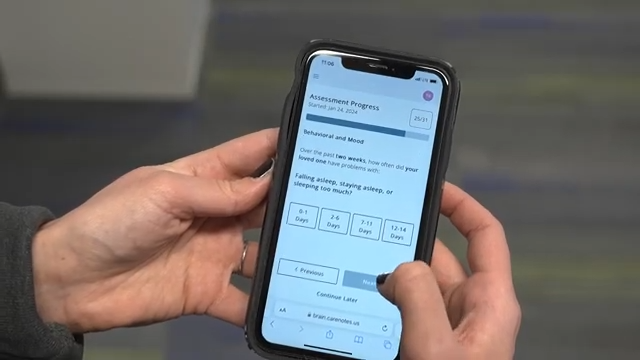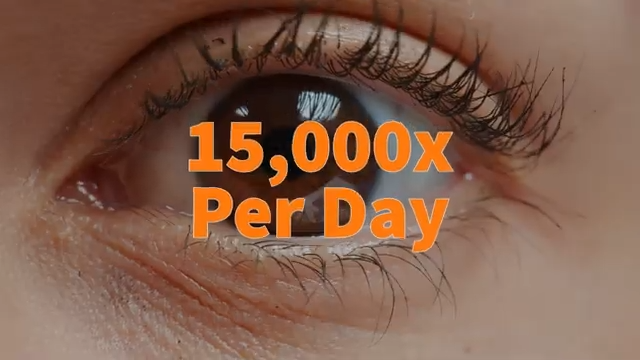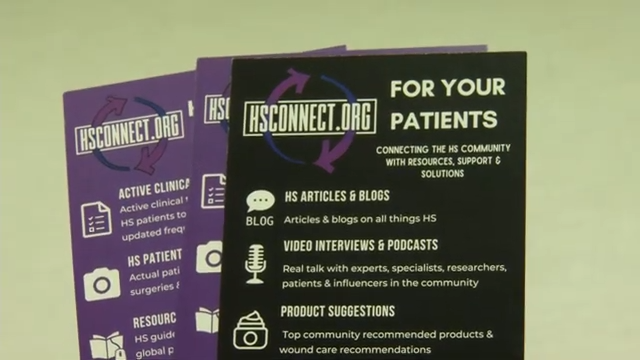ORLANDO, Fla. (Ivanhoe Newswire) — Stroke, injury, and certain cancers and diseases are just a few of the causes for a swallowing disorder. Something that used to be automatic can suddenly become extremely difficult … or impossible. Two researchers are pioneering a new therapy that their patients say is nothing short of a miracle.
Carlton Vaught and Cynthia Sucher have been married for 43 years. They love their dog Murphy Brown … and enjoy Vaught’s home-cooked meals.
“Cooking is a passion for me and that’s probably how I got to know Cynthia by doing special meals like crawfish etouffee and stuff like that for her,” said Vaught.
But that all changed after Sucher had surgery for a benign brain tumor and lost the ability to swallow.
Unable to eat or drink anything, Sucher had a feeding tube for five months.
Sucher shared, “I thought I’d eaten my last pizza. I’d eaten my last rhubarb. I’d eaten my last peanut butter pie. It was just … I just lost hope.”
Until she found UCF researchers, who developed an exercise-based treatment for patients to re-learn how to swallow.
Giselle Carnaby, PhD, MPH., CCC-SLP, F-ASHA, Professor of Speech Language Pathology and Internal Medicine, Center for Upper Aerodigestive Functions at the University of Central Florida explained, “So, we no longer view foods and fluids as a source of nutrition in that regard. We view them as barbells in the gym.”
“In this approach, swallowing is the exercise. So every swallow is like doing a push up basically,” said Michael Crary, PhD, CCC-SLP, F-ASHA, Honors ASHA, Professor of Speech-Language Pathology and Internal Medicine, Center for Upper Aerodigestive Functions at the University of Central Florida.
By Sucher’s fifth session, she was eating full meals again.
Vaught said, “It’s like she’s 500, 600 percent better. It’s just unbelievable.”
They’re back to enjoying life … and Vaught’s peanut butter pie!
Professor Carnaby says treatment typically takes three weeks, with many patients like Sucher recovering more quickly. She says they have about a 90 percent success rate. Professor Crary says they are working on developing a website where patients can find a certified provider that knows the training, in their location.
Contributors to this news report include: Hayley Hudson, Field Producer; Cyndy McGrath, Supervising Producer; Roque Correa, Editor and Videographer.
To receive a free weekly e-mail on Medical Breakthroughs from Ivanhoe, sign up at: http://www.ivanhoe.com/ftk
MEDICAL BREAKTHROUGHS
RESEARCH SUMMARY
TOPIC: SAVING CYNTHIA’S SWALLOW!
REPORT: MB #4574
BACKGROUND: There are two types of swallowing disorders; dysphagia and odynophagia. These disorders may be caused by a lack or coordination of your nerves or muscles, and sometimes they might be triggered by infections and tumors. Symptoms of swallowing disorders can range in severity which include dysphagia, coughing during or immediately after swallowing, choking, regurgitation, nasal regurgitation, a sore throat, hoarseness, shortness of breath, or chest discomfort or pain. However, it is hard for you to match a specific symptom to a swallowing disorder, which is why a doctor has to diagnose you to individualize your swallowing disorder and provide you with a treatment plan that is based on the severity of your symptoms and how they affect your daily activities.
(Source:https://www.hopkinsmedicine.org/health/conditions-and-diseases/swallowing-disorders)
DIAGNOSING: Since swallowing disorders may become serious depending on the severity of your symptoms, it is important that you get a proper diagnosis. Gastroenterologists are specially trained to diagnose swallowing disorders. You may also need to see motility specialists, neurologists, ear, nose and throat physicians, speech therapists, radiologists, and surgeons to evaluate and manage your swallowing disorder. Your diagnostic process will begin with a thorough physical examination from your doctor. Your medical history and history of symptoms will allow your doctor to determine the type of disorder you have. After this, you will need to get some tests done, such as an endoscopy, barium esophagram, esophageal manometry, wireless pH testing, and 24-hour pH impedance to determine the cause.
(Source:https://www.hopkinsmedicine.org/health/conditions-and-diseases/swallowing-disorders)
TREATMENT: Giselle Carnaby, PhD, MPH., CCC-SLP, F-ASHA, Professor of Speech Language Pathology and Internal Medicine, Center for Upper Aerodigestive Functions at the University of Central Florida describes her treatment as: “We alter the properties of resistance and load upon the system to try and work the muscles of swallowing like you would work your arms and legs at a gym.” She said they tested it on the most difficult patients, “They were the patients people had given up on and we thought if we could take the worst of the worst and make a difference, then this therapy had some teeth behind it. The theory was if we took chronic patients who were treatment refractory from all other types of treatment, and we worked the muscles in the system in this new manner, we could advance their ability to eat and drink independently.”
(Source: Giselle Carnaby, PhD, MPH., CCC-SLP, F-ASHA)
FOR MORE INFORMATION ON THIS REPORT, PLEASE CONTACT:
Giselle Carnaby
407-823-3537
If this story or any other Ivanhoe story has impacted your life or prompted you or someone you know to seek or change treatments, please let us know by contacting Marjorie Bekaert Thomas at mthomas@ivanhoe.com




